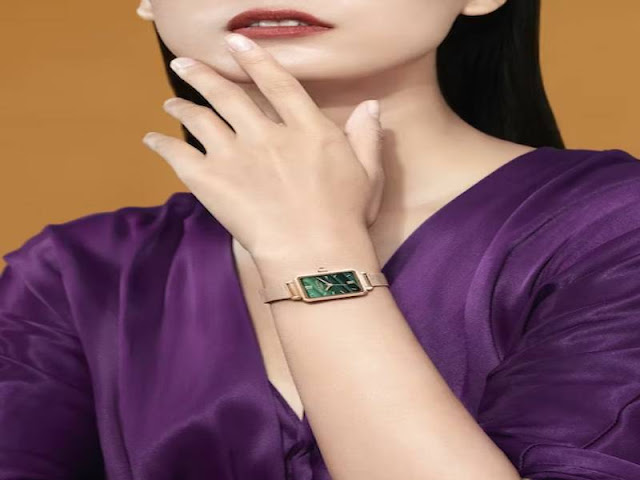
The Timeless Allure of Wrist Watches
Wristwatches, the quintessential accessory for timekeeping
and style, have been a part of our lives for over a century. As we delve into
the world of wristwatches, we find that these miniature marvels offer much more
than merely telling time; they serve as a reflection of our personal style,
craftsmanship, and an embodiment of enduring traditions.
A Brief History of Wristwatches
The history of wristwatches is a fascinating journey that
starts with their humble beginnings and evolves into the sophisticated
timepieces we see today. It all began in the late 19th century when pocket
watches were the norm. These pocket watches, suspended from chains and carried
in one's pocket, were the standard time-telling instruments. However, the needs
of the modern world were changing, especially in the context of World War I.
During World War I, soldiers required a more practical way
to keep track of time on the battlefield. Pocket watches were ill-suited for
the rigors of warfare, leading to the development of wristwatches. Brands like
Rolex and Cartier are known for their pioneering designs in the early 20th
century, crafting wristwatches that were both functional and stylish. As
wristwatches gained popularity, they gradually became a symbol of
sophistication and status.
Form and Function: A Balance in Design
Wristwatches are more than just instruments to measure time;
they are pieces of art, each carefully designed to combine form and function.
The marriage of engineering precision and aesthetic beauty is what sets
wristwatches apart. These miniature marvels are often the result of countless
hours of craftsmanship, from the intricate design of the watch face to the
delicate assembly of its internal mechanisms.
Wristwatches come in a vast array of designs to suit every
taste. From classic, minimalist pieces to bold, statement-making watches, the
range is virtually endless. The choice of materials, such as stainless steel,
gold, or even high-tech ceramics, offers a further dimension of
personalization. The watch strap, whether leather, metal, or rubber, adds
another layer of individuality.
Each wristwatch is an expression of the watchmaker's vision
and dedication to their craft. A complex mechanical movement can involve
hundreds of meticulously engineered parts working together in harmony to keep
time accurately. The beauty of these intricate movements lies both in their
complexity and in their reliability. The mechanical heartbeat of a watch is a
testament to human ingenuity, precision, and the pursuit of perfection.
A Window into Tradition
Wristwatches are not just fashion accessories or tools to
keep track of time; they are also a window into the rich tradition of horology.
The craft of watchmaking is steeped in history, and it's one of those rare
professions where traditional craftsmanship has endured alongside technological
advancements. Master watchmakers, often trained over generations, bring their
expertise to bear on every watch they create. This blend of tradition and
innovation is what makes wristwatches so enduringly appealing.
One of the hallmarks of traditional watchmaking is the
attention to detail. Each component, from the gears and springs to the dials
and hands, is carefully handcrafted, polished, and assembled. This manual
approach to watchmaking ensures that each watch is a unique work of art. The
dedication to traditional craftsmanship also means that many luxury watch
brands produce limited quantities of their timepieces, enhancing their
exclusivity and value.
Embracing Technology
While traditional watchmaking continues to thrive, the watch
industry has also embraced technological advancements. The advent of quartz
movements in the 20th century revolutionized the wristwatch industry. Quartz
watches are known for their accuracy and affordability, making them accessible
to a wider audience. With the integration of digital displays and smartwatch
features, the industry has continued to evolve, appealing to a new generation
of tech-savvy consumers.
Smartwatches, such as those produced by Apple, Samsung, and
Garmin, have made a significant impact on the wristwatch market. These devices
not only tell time but also provide an array of functions, from health tracking
to communication tools. The convergence of technology and horology has opened
up new possibilities for watch enthusiasts, allowing them to seamlessly
integrate their wristwatches into their daily lives.
The Sentimental Value of Wristwatches
Beyond their functional and aesthetic appeal, wristwatches
often hold a deep sentimental value. They are often gifted to mark important
life events, such as graduations, weddings, or anniversaries. A watch passed
down through generations carries with it the stories and memories of those who
have worn it. These timepieces become family heirlooms, connecting past and
present, and serving as a link between generations. Read more attractioner
In a world that increasingly relies on digital devices to tell
time, wristwatches remain a symbol of tradition, an expression of personal
style, and a reminder of the value of craftsmanship. They are a testament to
human ingenuity, a blend of technology and tradition that endures through the
ages. A wristwatch is more than an accessory; it's a time-honored piece of art
that tells not just time but a story of human achievement and craftsmanship.